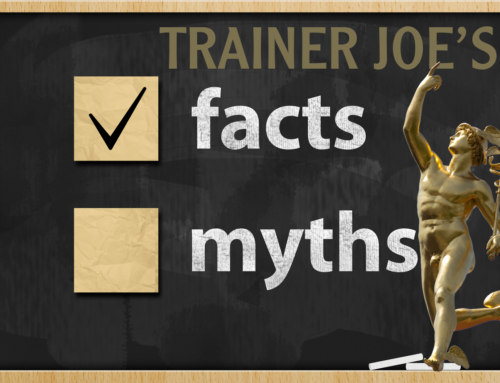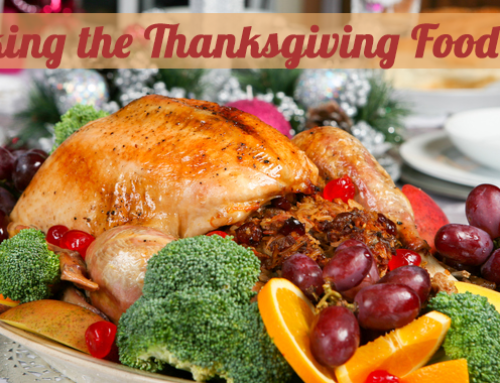When I worked as a sales executive at NCR many years ago, Nick, my regional director, lived in New York, and whenever he would meet me in New Jersey, he would take the opportunity to fill his car with “cheap Jersey gas.” Even though his car required premium, he would fill it with regular in New York to save a few bucks. Reduced mileage, poor acceleration, rough idling and engine knock were the consequences of using fuel that didn’t meet the manufacturer’s requirements. But in New Jersey, where gas prices were much lower, he would fill his car with what it was engineered for, premium—“the good stuff” as he called it.
That flashback got me thinking…what do we use as fuel for our bodies each day? Like Nick’s car, we are all designed to run on the good stuff for maximum performance. May I offer some thoughts on how to fuel the exercise and nutritional dimensions of your human engine:
Fueling Your Body With Exercise
Cardiovascular Training circulates oxygenated blood throughout our bodies, which in turn
- Strengthens our hearts
- Enhances our creativity
- Increases our lung capacity
- Stimulates new brain cell creation
- Reduces stress
- Facilitates weight management
The Surgeon General recommends that we do 150 minutes of moderate to high intensity cardio or 300 minutes of low intensity cardio each week. Your daily fill-up of cardio is cumulative, so 25 minutes in the morning and 25 minutes in the evening will total 50 minutes. If you do this four days per week, you are well on your way to meeting your cardio goal.
Strength Training builds muscle mass, strengthens bones and increases stamina, which in turn:
- Increases energy levels
- Prevents falls
- Boosts metabolism
- Facilitates weight management
- Enhances leadership ability
- Improves posture and appearance
Most fitness experts recommend adults should do a minimum of two hours of strength training per week. Whether you exercise four days a week for thirty minutes or twice weekly for an hour, each major muscle group should be exercised to the point of voluntary muscle failure through the full range of motion. As with cardio exercise, strength training should be appropriate for your age and stage of life, medical conditions and goals. Working with a physician and a trainer greatly increases your likelihood of success—and staying free of injuries.
Fueling Your Body With Food
Breakfast should be a high-octane mix of protein, complex carbs and healthy fats, enough to jumpstart our metabolism and sustain us midway to lunch. Good breakfast fuel examples include:
- Oatmeal with walnuts and dried fruit mixed in
- One or two ounces of fish, poultry or lean meat on a 100% whole wheat English muffin
- Ten to twelve ounce fruit smoothie with Greek yogurt
- Two lower-cholesterol eggs,
- One ounce of reduced-fat cheese or nuts
- Fresh seasonal fruits or veggies are always a great addition.
- Coffee, tea or other breakfast beverage
Snacks, both morning and afternoon, should boost your energy level and forestall hunger until the next meal. Also by gently wounding your appetite with 100 to 200 calories, snacks will reduce the calories you consume at subsequent meals. Quality snacks include:
- Mozzarella stick
- Low-fat yogurt
- Banana with peanut butter
- An apple, grapes, pear or apricot
- Cottage cheese and fruit
- A 100 to 200 calorie nutrition bar
- An extra glass of water
Lunch refueling should contain a blend of protein, complex carbs and quality fats. The key is to keep it light and avoid those foods that tend to make one tired, such as tryptophan-containing turkey and simple carbs. Quality fuels for these mid-race pit stops might include:
- Arugula salad with tuna, chicken or salmon on top
- Shrimp over whole-wheat pasta or rice
- Hearty chicken soup with barley and carrots
- Two to three ounces of lean beef, chicken or ham on 100% whole wheat bread with fresh sliced veggies
- Baked potato with two ounces of chili on top
- Greek yogurt with a piece of fruit
- Peanut butter and jam on 100% whole wheat bread, with piece of fruit
- Glass of water, ice tea or other non-alcohol beverage
Dinner selections would be similar to lunch. This would be a great time to enjoy the relaxation-causing tryptophan in pasta and turkey. A glass of wine might make a nice addition. Some keys to the end of day refueling include:
- If you’re going to eat late, eat light.
- Stage your meal in courses and take your time to enjoy your food
Start with the lowest calorie foods first. End with the most calorie-dense.
For example, start with a salad or fruit first, then a pasta course, then a main course of protein with another veggie, ending with a small sweet treat for desert.
- Make dinner special by using the good China and silverware. Soft music and candles add a relaxing atmosphere. Always eat sitting down. Mindfully eat your meal, staying present with your food and the people with whom you are sharing your meal.
- After desert, do your pre-bed oral hygiene routine, brush, floss, mouthwash. This will reduce the likelihood of eating a snack after dinner. (Do you really want to repeat this process again?) Leverage your laziness to help maintain a healthy weight.
By filling your tank with premium, you will extend the life of your engine and enjoy maximum performance in the race of your life. I would love to know about your special blend…what keeps you fueled all day. What’s in your tank?







Leave A Comment
You must be logged in to post a comment.